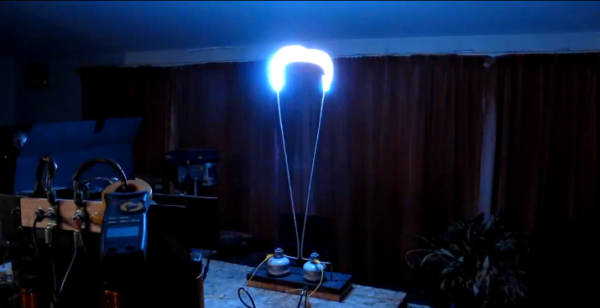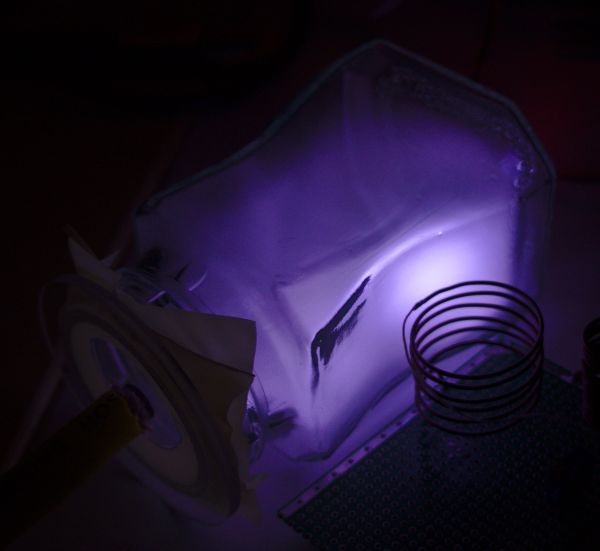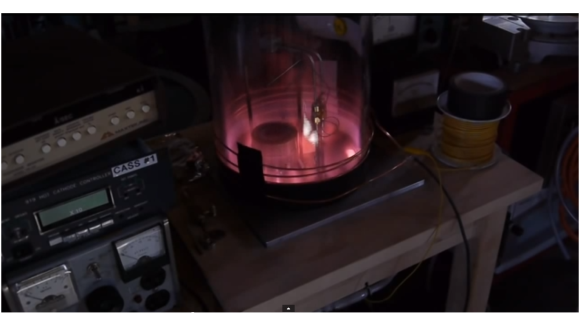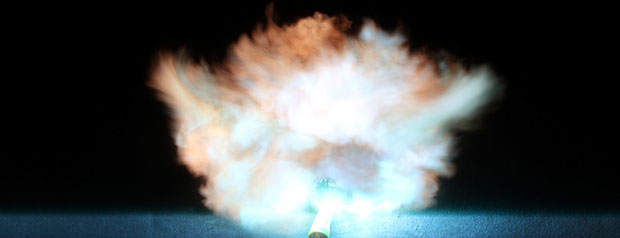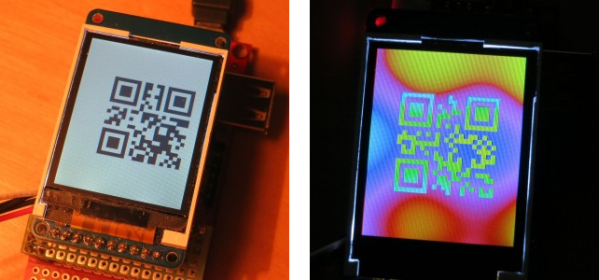If you are a Maker space or individual lucky enough to own a Plasma Cutter, this electric protractor compass could be handy. The folks over at [MakeItExtreme] built this circle cutting tool to help cut circles and rings in thick metal sheets using their plasma cutter.
The whole thing is built around an electro-magnet, so the jig will only work with magnetic metals. There are not a lot of design details, but it’s possible to infer how to build one looking at the video and the photos on their blog. There’s a couple of nice hacks along the way. Since the electro-magnet is stationary while the rest of the jig rotates, the main mounting bolt had a hole drilled through it to help route the cable. The rotating protractor arm is made from a slab of aluminium and holds all the other parts together – the drive motor, the central hub and the plasma head. The motor used appears to be a 60rpm AC synchro motor. These types usually have an RC phase shifting network between the two coils to allow direction reversal. Friction drive is used to rotate the jig, with the friction coming from a pair of rubber tube bands attached to the electro-magnet and the motor drive hub. The plasma head holder has a rod-end with a roller bearing attached, acting as a caster wheel, ensuring the arc gap is maintained as the jig rotates. A few switches to activate the electro-magnet, motor forward / reverse and plasma enable complete the setup.
Their blog, and YouTube channel has a lot of other interesting projects that they keep building. Check it out.



